 by "ttyymmnn" (ttyymmnn)
by "ttyymmnn" (ttyymmnn)
Published 08/11/2017 at 12:35
 by "ttyymmnn" (ttyymmnn)
by "ttyymmnn" (ttyymmnn)
Published 08/11/2017 at 12:35
Tags: Planelopnik
; planelopnik history
STARS: 12
Welcome to This Date in Aviation History , highlighting milestones, important historical events and people in aviation and spaceflight from August 9 through August 11.
!!! UNKNOWN CONTENT TYPE !!!
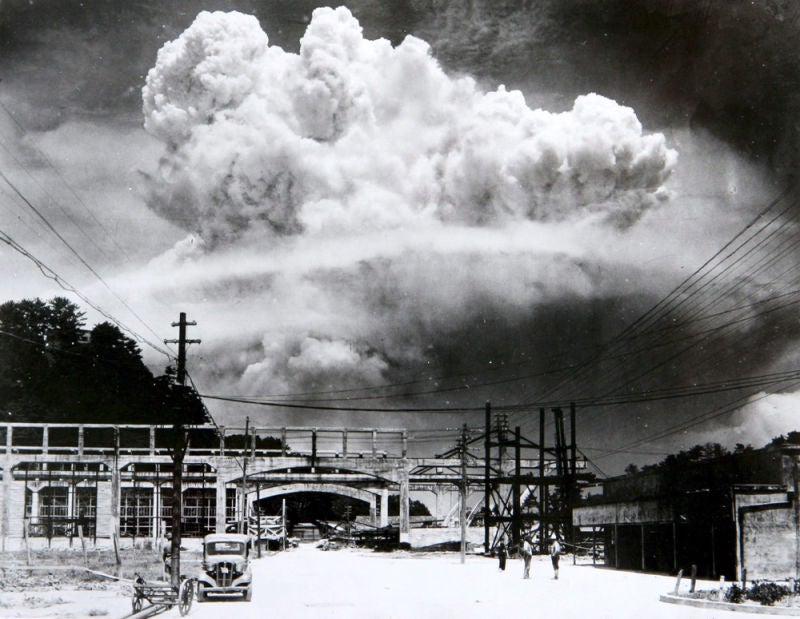
August 9, 1945 – The United states drops the Fat Man atomic bomb on the Japanese city of Nagasaki. While it was hoped that the bombing of Hiroshima on August 6 would compel the Japanese government to surrender, there was no sign that they were willing to do so. In fact, Japanese military leaders started making preparations for martial law that would prevent any Japanese from trying to make peace with the Allies. Following a dire warning from President Truman that more attacks would be forthcoming if the Japanese refused to capitulate, the president made good on his word and made the decision to continue the nuclear bombing until Japan surrendered. The next mission was slated for August 11, though predictions of poor weather over the target areas pushed the date up to August 9. The mission was carried out by another Silverplate Boeing B-29 Superfortress , this one named Bockscar after its regular commander, Capt. Frederick Bock . But Bock was not on the pilot rotation for the mission and the aircraft was instead commanded by Maj. Charles Sweeney , who had accompanied the Enola Gay on the Hiroshima mission. Bock accompanied the Nagasaki mission in a B-29 named Great Artiste , which had also taken part in the Hiroshima mission by carrying scientific instruments to measure the blast.
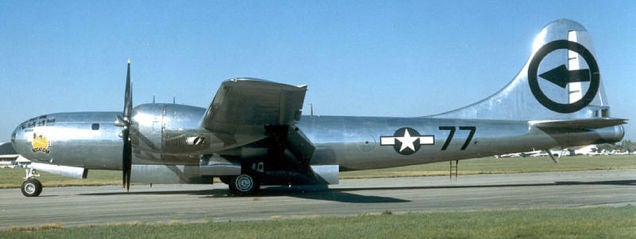
At 3:49 am on August 9, Sweeney and his crew departed Tinian bound for the city of Kokura, the primary target for the mission. However, upon arriving over the city, they found that poor weather conditions and smoke from previous conventional bombings obscured their view of the target. The crew decided to divert to Nagasaki, their backup target. During the war, Nagasaki was one of Japan’s largest seaports, housed critical industries for the production of ordnance and shipping, and was home to the Mitsubishi Shipyard. Unlike other Japanese cities, it had not been subjected to firebombing since its location made it difficult to target at night. The city also had many more buildings of traditional wood construction, unlike Hiroshima which had more concrete buildings. At the time of the bombing, there were an estimated 263,000 people in the city, of which only 9,000 were Japanese soldiers. The rest were civilians, along with 2,500 conscripted Korean workers and 400 Allied POWs. The bomb chosen for the mission was codenamed
Fat Man
(officially Mark III), an implosion-type nuclear bomb with a solid plutonium core. When it detonated over Nagasaki, the blast from
Fat Man
was greater than 21,000 tons of TNT, and anywhere from 40,000 to 70,000 inhabitants were killed in the initial explosion and resulting fires. Only 400 people in underground shelters survived. The city of Nagasaki is nestled between mountains, and had the topography not contained the explosion, the death toll could have been considerably higher. Due to a pump failure on board
Bockscar
, the crew did not have access to 600 gallons of fuel for the return flight, and they were unable to reach Tinian. Instead, they diverted to Okinawa and made an emergency landing on the busy airfield, firing flares to alert the controllers of their critical situation. With engines running out of fuel,
Bockscar
came to a stop behind a
Consolidated B-24 Liberator
that was waiting to take off. After the second atomic bombing, and with the
promise
of yet more nuclear attacks, the Japanese government finally capitulated on August 15. The official surrender ceremony that ended the Second World War was held on board the battleship
USS Missouri
(BB-63) in Tokyo Bay on September 2, 1945.
(Atomic cloud photo via Japanese Government;
Bockscar
photo via US Air Force)
!!! UNKNOWN CONTENT TYPE !!!
!!! UNKNOWN CONTENT TYPE !!!
!!! UNKNOWN CONTENT TYPE !!!
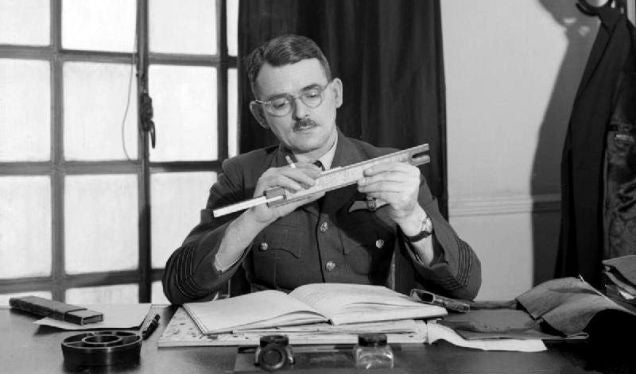
August 9, 1996 – The death of Sir Frank Whittle, an engineer who served with the Royal Air Force in WWII and is given credit for inventing the turbojet engine (Germany’s Hans von Ohain , who worked independently from Whittle, receives credit for the first operational jet engine). Following work on development of the motorjet concept, Whittle’s breakthrough came when he replaced the motorjet’s piston engine with a turbine and patented the concept in 1930. However, the British government saw little value in Whittle’s engine, so he formed Power Jets Ltd. to develop the engine on his own. By 1940, the Air Ministry finally placed a contract with Whittle to put his engine in the Gloster E.28/39 test aircraft, which first flew on May 15, 1941, and then the Gloster Meteor , the Allies’ only operational jet fighter of WWII. Following the war, Whittle worked in the British aviation industry and taught at the US Naval Academy. (British Government photo)
!!! UNKNOWN CONTENT TYPE !!!
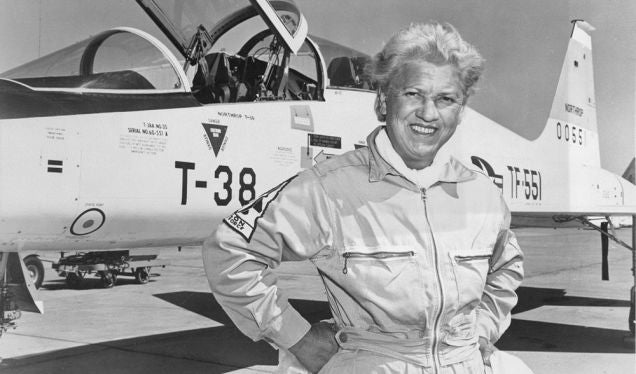
August 9, 1980 – The death of Jaqueline “Jackie” Cochran.
Cochran was born on May 11, 1906 in Muscogee, Florida and learned to fly after just three weeks of instruction. In the 1930s, Cochran was the only woman to compete for the
Bendix Trophy
, won five
Harmon Trophies
, and still holds more speed, distance and altitude records than any other pilot, male or female. During WWII, Cochran helped establish the
Women Airforce Service Pilots
(WASP), in which women pilots were trained to ferry military aircraft in the US to free up male pilots for war duty. After the war, Cochran continued setting records in jet aircraft, becoming the first woman pilot to break the sound barrier piloting a
Canadair Sabre
in 1953. She was also the first woman to land and take off from an aircraft carrier. Cochran died in 1980 at the age of 74.
(US Air Force photo)
!!! UNKNOWN CONTENT TYPE !!!
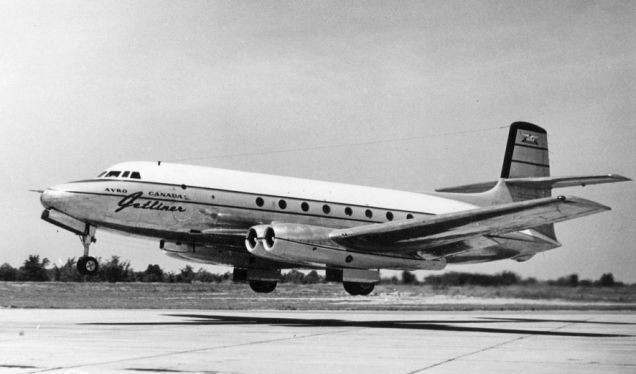
August 10, 1949 – The first flight of the Avro Canada C102 Jetliner, the world’s second jet-powered airliner. The C102 took its first flight just 13 days after the de Havilland Comet , and while it appeared that the Jetliner would prove to be a successful design, de Havilland Canada chose instead to focus their efforts on the production of their CF-100 Canuck interceptor. American billionaire Howard Hughes approached de Havilland and asked them to build 30 for him, but they refused, and they would not allow Hughes to produce the Jetliner in the US under license. A second, nearly completed prototype was scrapped, and the flying prototype was broken up in 1956. Despite a promising life cut short, the C102 did give the world one lasting legacy: the word jetliner, coined by Avro Canada for the C102, has since become the generic word for any large, jet-powered commercial transport. (Photo author unknown)
!!! UNKNOWN CONTENT TYPE !!!
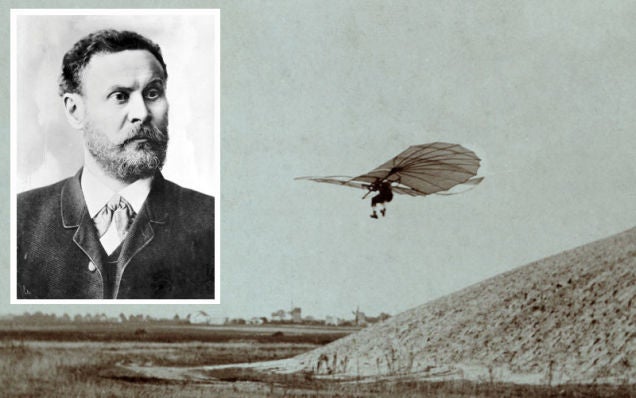
August 1o, 1896 – The death of Otto Lilienthal,
an early and influential pioneer of manned flight who was known as the
Glider King
for his experiments with, and development of, unpowered glider flight. Born on May 23, 1848, Lillienthal worked closely with his brother Gustav and made over 2,000 flights beginning in 1891, some of which covered distances of over 800 feet. While all those flights only accounted for five hours of actual flying time, Lillienthal’s influence on the history of manned aviation far outstripped his hours in the air. The notoriety he garnered not only popularized the idea of future powered flight, but also influenced the early work of the
Wright Brothers
and other aviation pioneers. Lillenthal was killed in the crash of one of his gliders when he entered an unrecoverable stall at an altitude of about 50 feet and suffered a broken neck in the subsequent crash.
(Lillienthal portrait via
Lilienthal Museum
; Glider photo via US Library of Congress)
!!! UNKNOWN CONTENT TYPE !!!
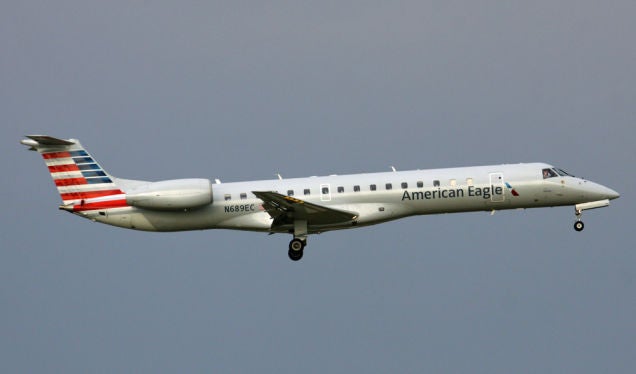
August 11, 1995 – The first flight of the Embraer ERJ-145, the largest of a family of commuter airliners that includes the ERJ 140 (up to 44 passengers) and the ERJ 135 (up to 37 passengers). With accommodation for 50 passengers, the ERJ 145 was developed as a faster and more comfortable alternative to the turboprop regional airliners in service at the time. Powered by a pair of Rolls-Royce AE 3007 high bypass turbofan engines, the ERJ 145 has a maximum cruising speed of about 515 mph, and the XR long-range variant can travel up to 2,000 nautical miles. More than 900 have been produced since 1989, and it remains in production today. (Photo by the author)
!!! UNKNOWN CONTENT TYPE !!!

August 11, 1972 – The first flight of the Northrop F-5E Tiger II,
an upgraded version of the Northrop F-5A Freedom Fighter and winner of the International Fighter Aircraft competition in 1970. In an effort to make the F-5A more competitive with the Soviet
Mikoyan-Gurevich MiG-21
,
Northrop lengthened and enlarged the F-5A to provide room for more fuel and improved avionics, and fitted more powerful
General Electric J85
engines. The wing area was also increased by the addition of larger leading edge extensions for better maneuverability, and Northrop equipped the F-5E with an
Emerson Electric AN/APQ-153
radar, where the F-5A/B had none. Almost 1,400 F-5E/Fs were built, and they saw extensive service with American allies. Though tested in combat by the US Air Force in 1965 during Operation
Skoshi Tiger
, where the F-5E received its nickname, the Tiger II never entered regular service with the USAF, though it does serve in the aggressor role for US combat flight training.
(US Air Force photo)
!!! UNKNOWN CONTENT TYPE !!!
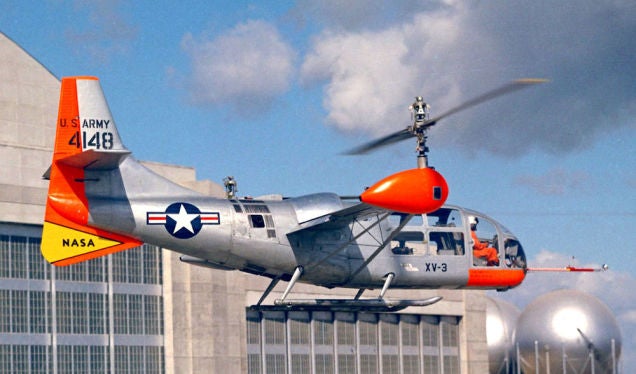
August 11, 1955 – The first flight of the Bell XV-3.
Though not the first
tiltrotor
aircraft, the Bell XV-3 verified the tiltrotor concept and eventually completed 110 successful transitions from vertical to horizontal and back to vertical flight. The XV-3 was powered by a single
Pratt & Whitney R-985 Wasp Junior
radial engine located in the fuselage which turned a pair of two-bladed rotors (the prototype had a three-bladed rotor) through a drive assembly that could rotate through 90 degrees. While only two aircraft were built, data from the XV-3 program was used to develop the
Bell XV-15
, which then paved the way for the
Bell Boeing V-22 Osprey
tiltrotor in service today.
(US Air Force photo)
!!! UNKNOWN CONTENT TYPE !!!
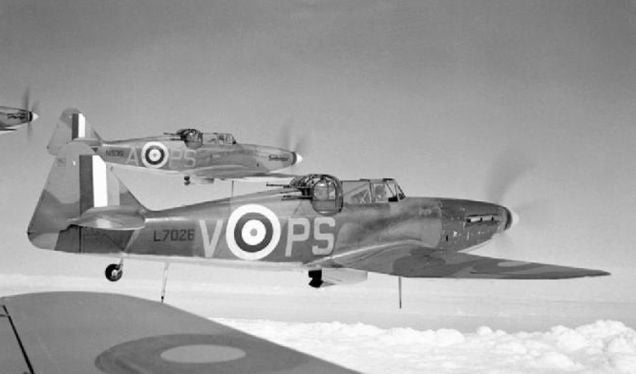
August 11, 1937 – The first flight of the Boulton Paul Defiant,
a “turret fighter” interceptor developed for the RAF just prior to the outbreak of WWII. At the time, the RAF envisioned waves of unescorted German bombers flying over England, and the turret fighter concept would allow the pilot to focus on flying below or alongside the bomber while the gunner, along with other Defiants, concentrated the firepower of four
M1919 Browning
.303 caliber machine guns on the bomber. However, the Defiant proved to be vulnerable to more maneuverable escort fighters such as the
Messerschmitt Bf 109
, and it was eventually converted to a night fighter before being replaced in the interceptor role by the
de Havilland Mosquito
. The Defiant was then used for gunnery practice and as a target tug. Just over 1,000 were built, and it was retired at the end of the war.
(British Government photo)
!!! UNKNOWN CONTENT TYPE !!!
!!! UNKNOWN CONTENT TYPE !!!
!!! UNKNOWN CONTENT TYPE !!!
!!! UNKNOWN CONTENT TYPE !!!
!!! UNKNOWN CONTENT TYPE !!!
!!! UNKNOWN CONTENT TYPE !!!
!!! UNKNOWN CONTENT TYPE !!!
If you enjoy these Aviation History posts, please let me know in the comments. And if you missed any of the past articles, you can find them all at Planelopnik History . You can also find more stories about aviation and aviators at Wingspan and Planes You’ve (Probably) Never Heard Of .
!!! UNKNOWN CONTENT TYPE !!!
 "Smallbear wants a modern Syclone, local Maple Leafs spammer" (smallbear94)
"Smallbear wants a modern Syclone, local Maple Leafs spammer" (smallbear94)
08/11/2017 at 13:05, STARS: 0
I always wondered what the logic was on the Defiant. There didn’t seem to be any at all.
 "RallyWrench" (rndlitebmw)
"RallyWrench" (rndlitebmw)
08/11/2017 at 13:06, STARS: 2
Sobering, in light of current events. When one says “fire and fury like the world has never seen”, well, Nagasaki (and countless other terrifying acts of war) is what the world has seen. WTF, you know?
 "RamblinRover Luxury-Yacht" (ramblininexile)
"RamblinRover Luxury-Yacht" (ramblininexile)
08/11/2017 at 13:08, STARS: 0
Otto Lilienthal’s last words, which stuck with the Wrights and steeled their resolve?
Sacrifices must be made...
 "RamblinRover Luxury-Yacht" (ramblininexile)
"RamblinRover Luxury-Yacht" (ramblininexile)
08/11/2017 at 13:12, STARS: 1
Considering how bonzo the Germans went with specialized bomber interception (Fw-190s with up to four extra cannon pods, JU-88s with upward-firing cannons, flak rockets...) just to try to stop the Eighth, the Brits were just assuming that the Germans would somehow manage a darken-the-sky campaign with bigger bombers, one that they never ended up having the resources and competence to pull off.
It makes a lot more sense to build a stable flying
Flakturm
if the bombers are big, but they never actually were.
 "Smallbear wants a modern Syclone, local Maple Leafs spammer" (smallbear94)
"Smallbear wants a modern Syclone, local Maple Leafs spammer" (smallbear94)
08/11/2017 at 13:19, STARS: 0
Even still, the whole concept is a bit like expecting to need a tri-lobe screwdriver when you already have a multitool. It’s for one specific purpose under very picky circumstances, and was put into production even thought a Hurricane or Spit would be completely at home doing the same job, while also being capable of dealing with unexpected situations. Like, someone
else
shooting at
them
. In a war? Who knew!
 "RamblinRover Luxury-Yacht" (ramblininexile)
"RamblinRover Luxury-Yacht" (ramblininexile)
08/11/2017 at 13:33, STARS: 1
The Zeitgeist of the late 30s was that everything would be specialized roles. Look at how the US had a different single engine bomber for every day of the week, more or less. Given what ze Germans had tried to pull with larger and larger bombers and Zeppelins in WWI and that the Condor premiered in ‘37 as well, it wasn’t unreasonable to think “eh, might need a fast flying flak tower”. And, in fairness, it wasn’t their fault that the “you’re-not-fooling-anyone-with-this-”airliner”-shit” Condor didn’t get made in mass numbers. Nor was it crazy to think that bombers might have weak zones easier to exploit with a turret than forward guns - the Germans demonstrated that later on.
It was more a hex driver purchased in the certain knowledge that the enemy had a couple of 10mm head bolts.
 "fintail" (fintail)
"fintail" (fintail)
08/11/2017 at 13:38, STARS: 2
It’s almost like plagiarism runs in the family.
 "You can tell a Finn but you can't tell him much" (youcantellafinn)
"You can tell a Finn but you can't tell him much" (youcantellafinn)
08/11/2017 at 13:42, STARS: 1
I know a MiG-28 when I see one.
!!! UNKNOWN CONTENT TYPE !!!
 "Smallbear wants a modern Syclone, local Maple Leafs spammer" (smallbear94)
"Smallbear wants a modern Syclone, local Maple Leafs spammer" (smallbear94)
08/11/2017 at 13:44, STARS: 0
Actually, iirc the Condor WAS actually designed for being an airliner... unlike the HE111 and DO17. It was converted into a bomber because Germany didn’t have a proper long-range bomber. There had been one in the works, and it was ready for flight testing well before the war, but Goering killed it on the basis that “The Fuehrer will not ask how big the bombers are, but how many there are” and twin-engined mediums were easier to build fast. That and the fact that Goering had been a fighter pilot and was likely more tactically minded than strategically minded, unlike his peers on the other side.
Anyway, the Condor fit the bill as close as anything, so it got pressed into service when they found they actually did need a long range bomber. But being built as an airliner rather than a bomber disguised as one, it proved flimsy in service. As a result it was slowly pushed back into the role of a transport.
 "ttyymmnn" (ttyymmnn)
"ttyymmnn" (ttyymmnn)
08/11/2017 at 13:59, STARS: 0
But I bet you’ve never seen a MiG-23.
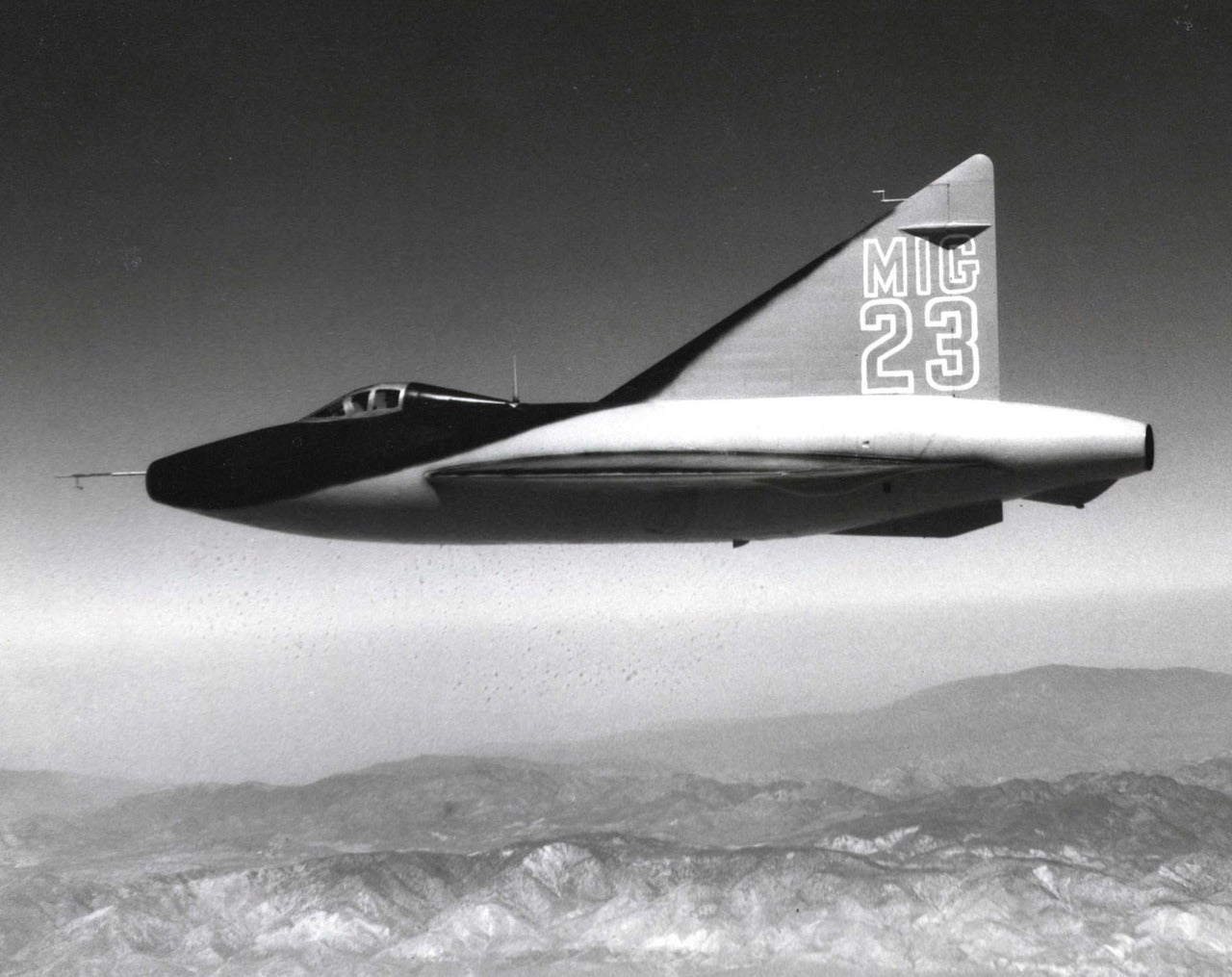
 "ttyymmnn" (ttyymmnn)
"ttyymmnn" (ttyymmnn)
08/11/2017 at 14:00, STARS: 1
Really? I thought his last words were, “Hier, halte mein Bier.”
 "ttyymmnn" (ttyymmnn)
"ttyymmnn" (ttyymmnn)
08/11/2017 at 14:03, STARS: 1
The Condor was designed as an airliner, but I think there was always a consideration for turning it into a long-range maritime patrol or bomber aircraft. It was also a gorgeous aircraft.
 "RamblinRover Luxury-Yacht" (ramblininexile)
"RamblinRover Luxury-Yacht" (ramblininexile)
08/11/2017 at 14:04, STARS: 1
Okay, his *other* last words.
 "Xyl0c41n3" (i-am-xyl0c41n3)
"Xyl0c41n3" (i-am-xyl0c41n3)
08/11/2017 at 14:29, STARS: 1
And then almost exactly 72 years later, to the day, (he was one day early), this buffoon goes and says this: “[T]hey will be met with fire, fury and frankly power, the likes of which this world has never seen before.”
!!! UNKNOWN CONTENT TYPE !!!
 "You can tell a Finn but you can't tell him much" (youcantellafinn)
"You can tell a Finn but you can't tell him much" (youcantellafinn)
08/11/2017 at 15:48, STARS: 0
Can’t say that I’ve seen one quite like that. It’s got a big... vertical stabilizer.
WTF is that? The MiG-23 I’m familiar with is a much more attractive plane.
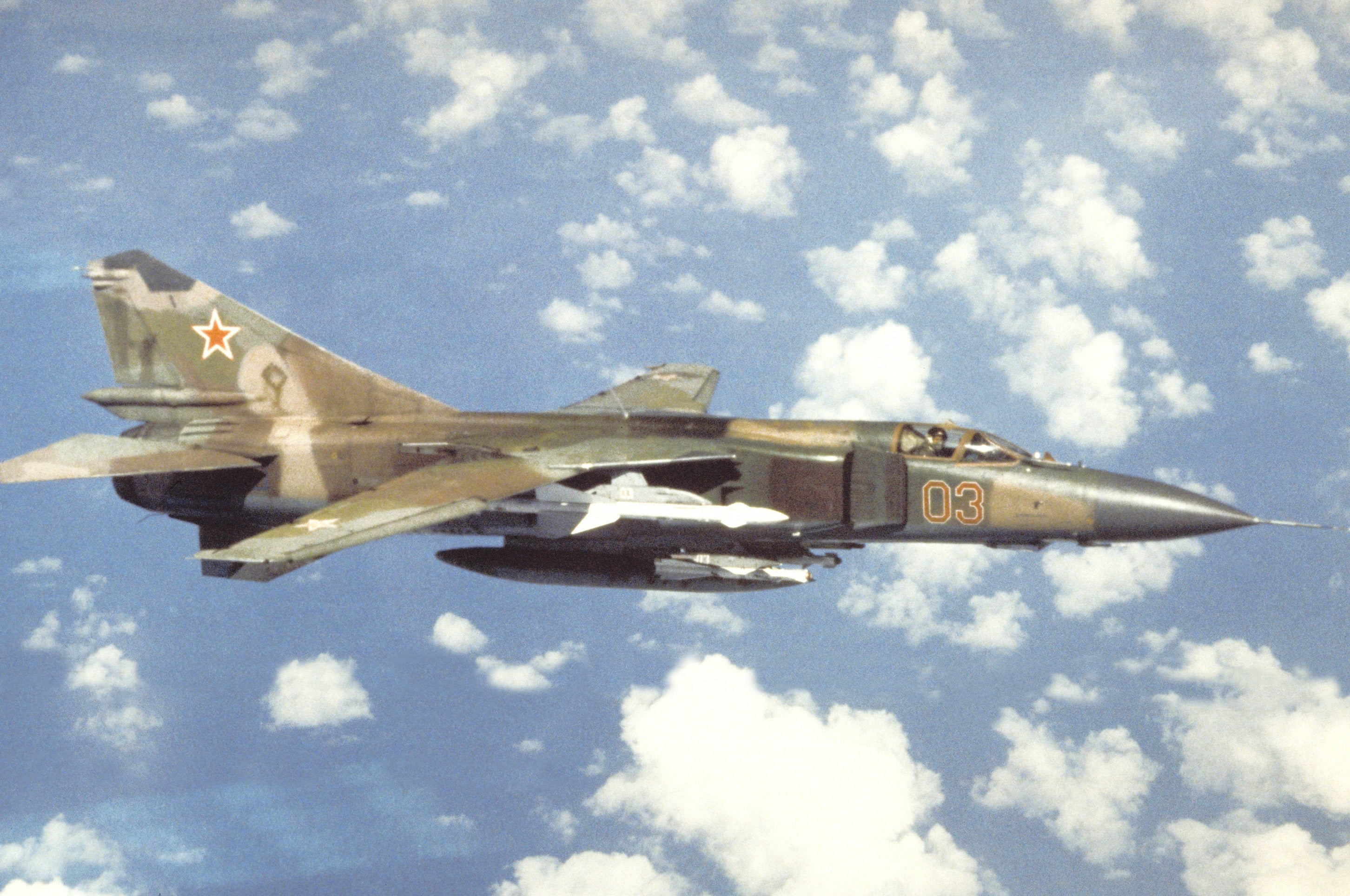
It’s got that certain Soviet charm going for it.
 "ttyymmnn" (ttyymmnn)
"ttyymmnn" (ttyymmnn)
08/11/2017 at 15:52, STARS: 0
It’s a trick question. That is actually the Convair XF-92 , but it appeared in the movie Jet Pilot (1957) starring John Wayne and Janet Leigh, 10 years before the real MiG-23 flew.
 "wafflesnfalafel" (wafflesnfalafel1)
"wafflesnfalafel" (wafflesnfalafel1)
08/11/2017 at 16:26, STARS: 2
I had not see that shot of the Nagasaki bomb - thanks for posting. What must those folks withing view have been thinking when it went off without any previous frame of reference for something like that...
 "ttyymmnn" (ttyymmnn)
"ttyymmnn" (ttyymmnn)
08/11/2017 at 16:42, STARS: 0
I can’t even imagine. Hard to know if they had heard of the Hiroshima bomb before they got hit.
 "Grindintosecond" (Grindintosecond)
"Grindintosecond" (Grindintosecond)
09/21/2017 at 19:52, STARS: 0
I’m late to this party of discussion but something to think about, is the president during the WW2 bombing. He was actually not in control of the bomb until after Nagasaki. He was told it was used on strategic targets only and had no idea of the civilian damage until after, when the numbers came in. Unfortunately that was after Nagasaki, and he clamped down on the use of the bomb because the military didn’t tell him the whole truth of how they were using it. To this day it’s a presidential only weapon. So he may have made promises, but they weren’t completely informed ones.